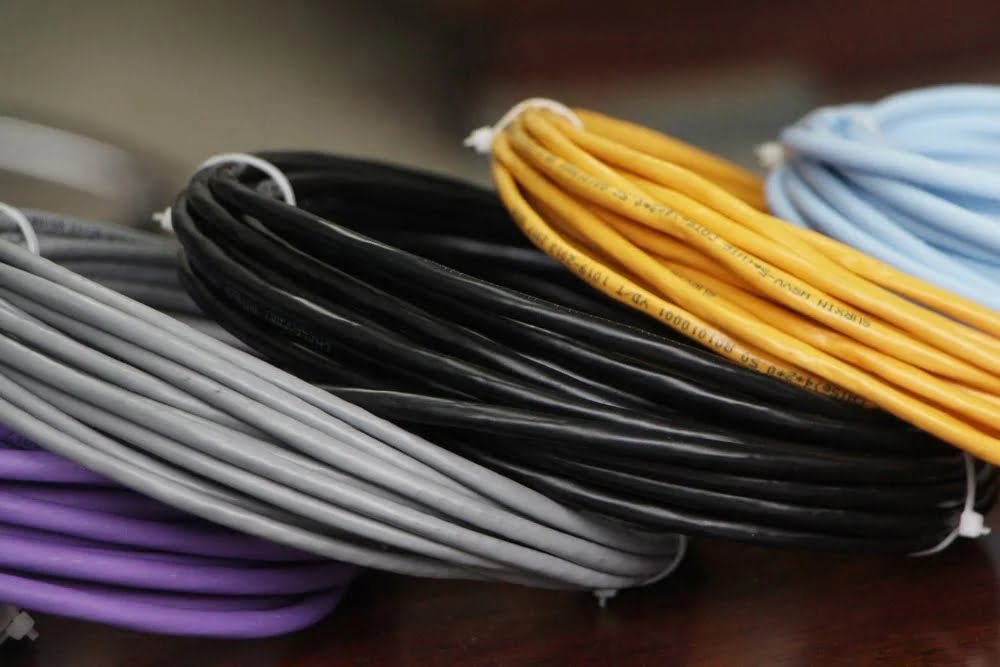Introduction to UTP Cat6 Cable Manufacturing in China
неэкранированная витая пара (УТП) Кабели Cat6 являются интегральными компонентами в современных сетевых инфраструктурах, в первую очередь из-за их способности поддерживать высокоскоростную передачу данных. Эти кабели обслуживают различные приложения, в том числе офисные сети, центры обработки данных, и жилые широкополосные соединения. The robust design of UTP Cat6 cables effectively reduces crosstalk and interference, ensuring reliable signal transmission over distances up to 100 meters without requiring additional amplification.
China has emerged as a leading manufacturer of UTP Cat6 cables, attracting global attention for several reasons. One of the most notable advantages of sourcing UTP Cat6 cables from Chinese suppliers is the competitive pricing. The economies of scale achieved by Chinese manufacturers enable them to offer cost-effective solutions without compromising on quality. This affordability extends a significant benefit to enterprises looking to build or expand their network infrastructures within strict budgetary constraints.
The technological advancements within China’s manufacturing sector also play a crucial role. Many Chinese manufacturers invest heavily in state-of-the-art production facilities and equipment, ensuring that their UTP Cat6 cables meet the highest standards of performance and reliability. The scale of production capabilities in China further enhances their ability to fulfill large orders promptly, minimizing lead times for global customers.
Кроме того, understanding the standards and certifications required for UTP Cat6 cables is essential when considering sourcing from China. These cables must comply with international standards such as ANSI/TIA-568.2-D and ISO/IEC 11801, which outline the specifications for transmitting data and ensuring compatibility within network systems. Chinese manufacturers often provide comprehensive testing reports and certifications to validate their adherence to these rigorous standards, offering peace of mind to buyers regarding the quality and performance of their products.
В заключение, the combination of competitive pricing, advanced manufacturing technologies, and robust production capacities makes China a compelling choice for sourcing UTP Cat6 cables. For businesses aiming to build reliable and cost-effective network infrastructures, understanding the manufacturing landscape in China is vital.

Common Quality and Packaging Issues Encountered
When sourcing UTP Cat6 cables from wholesale suppliers in China, several quality and packaging complications can surface, potentially affecting the overall performance and reliability of the cables. One frequent concern is inconsistency in performance metrics such as attenuation and crosstalk. Attenuation refers to the loss of signal strength as it travels along the cable, while crosstalk is the interference caused by signals in adjacent wires. Variability in these metrics can significantly diminish the cable’s functionality and render it unsuitable for high-speed data transmission.
Another common issue revolves around physical defects. Damaged connectors and poor insulation are prevalent problems. Например, connectors may arrive bent, broken, or improperly crimped, leading to unstable connections. Сходным образом, inadequate insulation can expose the cables to external interferences, reducing their efficacy and lifespan. These defects not only impact performance but also compromise safety standards, making the cables a risky choice for critical applications.
Packaging-related issues are also significant concerns. Insufficient protective measures during shipping can result in cables arriving at their destination damaged. Например, cables might be coiled in a manner that causes bending and kinks, or they could be packed without enough cushioning, leading to impact damage. Incorrect labeling is another problem; mislabeled packages can cause confusion and delays, especially if they fail to meet regulatory or customer-specific requirements.
Real-world testimonials underscore these challenges. A UK-based networking company reported receiving a batch of UTP Cat6 cables with multiple physical defects, including damaged connectors and ineffective insulation, which led to considerable time and financial losses in rectifying the issues. Сходным образом, another IT service provider shared experiences of cables arriving with inadequate packaging, resulting in a significant portion of the order being unusable upon delivery.
Addressing these quality and packaging issues requires rigorous supplier vetting, robust quality control protocols, and clear communication channels between buyers and suppliers. By acknowledging and mitigating these challenges, organizations can achieve more reliable and efficient outcomes in their networking projects.
Efficient Response and Resolution Mechanisms
Reputable Chinese suppliers of wholesale UTP Cat6 cables adhere to stringent response and resolution mechanisms to address complaints related to quality or packaging. The process typically commences with the lodging of a formal complaint by the buyer. This can generally be done through multiple communication channels, such as email, dedicated customer support portals, or direct communication with account managers.
Upon receiving the complaint, suppliers aim to provide an initial response within 24 to 48 часы. This initial response often includes acknowledgment of the issue and a preliminary assessment to determine the nature and scope of the problem. During this stage, suppliers may request additional information, such as photos or detailed descriptions, to facilitate a comprehensive evaluation.
Post-assessment, the suppliers proceed to formulate a resolution plan tailored to the specific complaint. Common resolution mechanisms include issuing replacement batches of UTP Cat6 cables to rectify any deficiencies, offering refunds for defective products, or providing technical support to resolve installation or usage issues. Such measures ensure that buyers experience minimal disruption in their operations.
Third-party quality inspections play a pivotal role in maintaining high standards and enhancing credibility. Many suppliers engage independent quality assurance firms to conduct periodic inspections and certify the consistency of their product offerings. This proactive approach mitigates the occurrence of quality-related complaints and fosters trust among international buyers.
Customer service excellence is paramount for Chinese suppliers in the highly competitive market of UTP Cat6 cables. Maintaining transparent communication, offering timely resolutions, and implementing feedback-driven improvements are crucial practices that underpin their commitment to customer satisfaction. Through these mechanisms, suppliers not only resolve issues efficiently but also reinforce their reputation for reliability and quality in the global market.
Recommendations for Buyers to Ensure Quality and Packaging Standards
When sourcing UTP Cat6 cables from China, ensuring quality and proper packaging standards is paramount. Selecting accredited suppliers is an essential first step. Buyers should prioritize suppliers who possess recognized certifications and adhere to international standards. This accreditation can often be verified through supplier directories or industry associations that list certified companies. Engaging with certified suppliers significantly reduces the risk of quality discrepancies.
In addition to choosing accredited suppliers, conducting pre-shipment inspections is a critical practice. These inspections allow buyers to verify the quality and packaging standards of their orders before they are shipped. Hiring third-party inspection services can provide an unbiased assessment of the product, ensuring that it meets the specified requirements. This step is especially crucial when dealing with large orders, as it helps identify potential issues early, avoiding costly disputes and delays.
Understanding the technical specifications and certifications that guarantee product quality is another vital aspect. Familiarize yourself with the relevant standards and certifications such as ISO, Rohs, and TIA/EIA-568-B.2-1, which signify compliance with essential quality and safety guidelines. Clearly communicate these requirements to your supplier and verify that the products meet or exceed these standards.
Effective communication with suppliers forms the backbone of a successful transaction. Establish clear terms and expectations regarding product specifications, packaging, and delivery timelines. It is prudent to agree on terms for dispute resolutions to handle any issues that may arise efficiently. Setting these terms upfront helps in swiftly addressing any problems, ensuring smooth operations.
Наконец, leveraging feedback from previous buyers can provide valuable insights. Reviews and testimonials often highlight consistent patterns regarding supplier reliability and product quality. Utilizing platforms that offer verified buyer feedback can aid in making informed decisions.
By adhering to these recommendations, buyers can significantly enhance their chances of receiving high-quality UTP Cat6 cables, packaged to their specifications, and can efficiently address any issues that might emerge during the procurement process.

